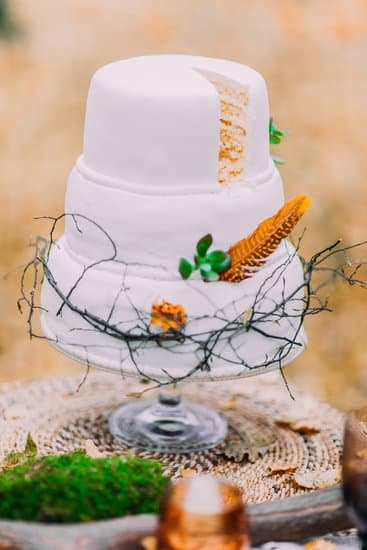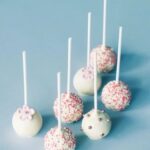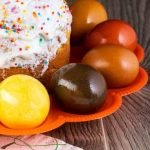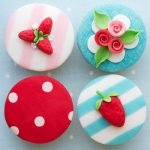Are you looking for tips on how to decorate a single layer cake? Look no further. Single layer cakes are not only delicious but also provide the perfect canvas for creative and stunning decorations. Whether you’re a beginner or an experienced baker, this article will guide you through the process of decorating a single layer cake, from choosing the perfect recipe to adding personalized touches.
When it comes to decorating cakes, single layer cakes offer several advantages. They are easier to bake and assemble, making them ideal for novice bakers. Additionally, their simplicity allows for more focus on the decorative elements, resulting in visually appealing and Instagram-worthy creations. From birthdays to celebrations, single layer cakes are versatile and can be easily customized to suit any occasion.
In this article, we will explore the essential steps and techniques for decorating a single layer cake. We’ll cover everything from selecting the right recipe and preparing the cake for decoration, to exploring basic frosting and icing techniques.
Furthermore, we’ll delve into creative ideas for decorating with fresh fruit, nuts, edible flowers, as well as using piping and fondant to create intricate designs. So whether you’re looking to impress your friends at your next gathering or simply want to showcase your baking skills, read on for expert tips on creating beautifully decorated single layer cakes.
Choosing the Perfect Single Layer Cake Recipe
When it comes to decorating a single layer cake, choosing the right recipe is key. Whether you prefer a classic vanilla or chocolate flavor, or if you want to experiment with unique flavors like lemon or red velvet, the options are endless. Here are some tips for choosing the perfect single layer cake recipe:
1. Consider the Occasion: If you’re decorating a single layer cake for a specific occasion, such as a birthday or anniversary, consider selecting a recipe that complements the theme of the event. For example, a rich and indulgent chocolate cake may be perfect for a decadent celebration, while a light and fruity cake could be ideal for a summer gathering.
2. Flavor Pairings: Think about flavor pairings that work well with your chosen frosting or icing. For example, if you plan to use a zesty lemon buttercream, consider pairing it with a moist lemon-infused cake to create a cohesive flavor experience.
3. Dietary Restrictions: If you or your intended guests have dietary restrictions, such as gluten-free or dairy-free requirements, make sure to select a single layer cake recipe that accommodates these needs without compromising on taste and texture.
Once you’ve selected the perfect single layer cake recipe, it’s time to move on to the next steps in preparing your cake for decorating.
Now that we’ve discussed how to choose the perfect single layer cake recipe, let’s move on to preparing the cake for decorating by focusing on baking, cooling, and leveling.
Preparing the Cake for Decorating
When it comes to decorating a single layer cake, the first step is to prepare the cake itself. Whether you choose to use a boxed mix or make your own from scratch, it’s important to select a recipe that provides a sturdy and moist crumb that can withstand the weight of your decorations. Look for recipes that are specifically designed for single layer cakes, as they tend to be denser and more stable than traditional layer cake recipes.
Once you have baked your cake according to the recipe instructions, allow it to cool completely before attempting to decorate. Trying to frost or decorate a warm cake will only lead to frustration as the frosting will melt and slide off. After cooling, it’s essential to level your cake by removing any domed top with a serrated knife or cake leveler. This ensures that your cake will have an even surface for decorating and stacking if desired.
After leveling, consider wrapping and chilling your single layer cake before decorating it. A chilled cake is easier to work with and less likely to develop crumbs when frosting and adding decorations.
How to Decorate a Single Layer Cake: Step-by-Step
Now that your single layer cake is baked, cooled, leveled, and possibly chilled, it’s time to begin the fun part – decorating. The next section will cover essential tools and supplies you’ll need for successful cake decorating, as well as basic techniques for frosting and icing your single layer masterpiece.
Essential Tools and Supplies for Decorating a Single Layer Cake
Decorating a single layer cake can be a fun and creative process, but it is important to have the right tools and supplies on hand. Whether you are a beginner or an experienced baker, having the essential decorating tools will make the process much easier and more enjoyable. Here are some must-have items for decorating a single layer cake:
1. Offset spatula: This tool is essential for spreading and smoothing frosting or icing on the cake. Its angled shape makes it easy to maneuver and create a professional-looking finish.
2. Piping bags and tips: These are used for creating decorative designs with frosting or icing. There are many different types of piping tips available, allowing you to create various patterns and textures on your cake.
3. Turntable: A turntable makes it much easier to frost and decorate a cake by allowing you to spin the cake as you work. This ensures even coverage and smooth edges.
4. Bench scraper: This tool is ideal for creating clean, straight sides on your cake as well as smoothing out any imperfections in the frosting.
5. Edible decorations: Fresh fruit, nuts, edible flowers, chocolate shavings, and sprinkles are just a few examples of edible decorations that can add color, texture, and flavor to your single layer cake.
By having these essential tools and supplies on hand, you will be well-equipped to decorate a beautiful single layer cake for any occasion.
| Essential Tools | Supplies |
|---|---|
| Offset spatula | Frosting/Icing |
| Piping bags and tips | Fresh fruit/nuts/edible flowers |
| Turntable | Chocolate shavings/sprinkles |
Basic Techniques for Frosting and Icing
Frosting and icing are essential components of decorating a single layer cake. They not only add sweetness and flavor but also provide a beautiful canvas for additional decorative elements. Here are some basic techniques for frosting and icing a single layer cake:
1. Spreadable Frosting: One of the most common ways to frost a single layer cake is by using a spreadable frosting, such as buttercream or cream cheese frosting. After allowing the cake to cool completely, use an offset spatula to evenly spread a generous amount of frosting over the top of the cake. Smooth out the frosting using long strokes, ensuring that it covers the entire surface.
2. Poured Icing: Another simple way to cover a single layer cake is by using poured icing, which creates a smooth and glossy finish. To make poured icing, simply mix powdered sugar with milk or water until you reach your desired consistency. Pour the icing over the cooled cake, allowing it to flow down the sides for full coverage.
3. Decorative Techniques: Once your single layer cake is covered in frosting or icing, you can get creative with decorative techniques. Use an offset spatula to create swirls or peaks in the frosting, sprinkle on colored sugar or edible glitter, or add edible pearls or sprinkles for extra sparkle and texture.
These basic techniques provide a solid foundation for how to decorate a single layer cake with frosting and icing. Experiment with different flavors and colors to customize your cake according to any occasion or personal preference.
Creative Ideas for Decorating With Fresh Fruit, Nuts, and Edible Flowers
Fresh fruit, nuts, and edible flowers can add a beautiful and delicious touch to your single layer cake. When it comes to decorating with these natural elements, there are endless possibilities to explore. Whether you’re decorating for a special occasion or simply want to elevate your everyday baking, incorporating fresh fruits, nuts, and edible flowers is a great way to add color, flavor, and texture to your cake.
One popular method for decorating with fresh fruit is creating intricate designs or patterns on top of the frosted cake. Berries such as strawberries, blueberries, and raspberries can be arranged in elegant patterns or even used to spell out words or form shapes. For a more rustic look, sliced peaches, kiwi, or mango can be layered on top of the cake in an organic and visually appealing manner.
Nuts are another fantastic addition to single layer cakes. Chopped nuts like almonds, pecans, or walnuts can be sprinkled along the edges of the cake for added crunch and flavor. Alternatively, whole toasted hazelnuts or candied nuts can be strategically placed on top of the cake as a focal point for an elegant finish.
Finally, incorporating edible flowers into your cake decorating can lend a charming and whimsical aesthetic. Flowers such as roses, pansies, violets, or lavender are not only visually stunning but also completely safe for consumption when sourced from reliable suppliers. Edible flowers can be scattered across the frosting or carefully placed in clusters for a delightful finishing touch.
| Decorating Element | Ideas |
|---|---|
| Fresh Fruit | Create intricate designs or patterns using berries; layer sliced fruit for a rustic look |
| Nuts | Sprinkle chopped nuts along the edges; use whole toasted nuts as a focal point |
| Edible Flowers | Scatter flowers across the frosting; place them in clusters for a whimsical touch |
Using Piping and Fondant to Create Intricate Designs
Piping and fondant are two popular techniques for creating intricate designs on single layer cakes. These methods allow you to add beautiful and detailed decorations that will impress your guests. Whether you want to create delicate flowers, intricate patterns, or personalized messages, piping and fondant can help you achieve a professional-looking finish on your cake.
Piping involves using a pastry bag and various tips to apply frosting in different shapes and designs. To start, choose the right tip for the design you have in mind. You can use a round tip for writing or making dots, a star tip for creating rosettes or borders, and a leaf tip for adding leaves or petals. Practice with different tips on parchment paper before applying the design to your cake.
Fondant is a versatile edible icing that can be rolled out into thin sheets and used to cover cakes or create decorative elements. To use fondant for intricate designs, roll it out thinly on a clean, smooth surface dusted with powdered sugar to prevent sticking. Use cookie cutters or specialty fondant cutters to create shapes, or mold the fondant by hand to make flowers, figurines, or other detailed decorations.
Both piping and fondant require practice to perfect, so don’t be discouraged if your first attempts aren’t perfect. With time and patience, you’ll be able to create stunning designs on your single layer cakes using these techniques.
Tips for Adding Personalized Touches and Finishing Touches to Your Single Layer Cake
Adding personalized touches and finishing touches to your single layer cake is what will truly set it apart and make it a memorable dessert. Whether you’re celebrating a special occasion or simply want to impress your guests, there are several ways to make your cake unique and beautiful.
Customized Cake Toppers
One of the simplest ways to add a personal touch to your single layer cake is by using a customized cake topper. You can find or create a topper that reflects the theme of your event, such as a monogram, birthday age, or even a miniature replica of the guest of honor.
Edible Decorations
Incorporating edible decorations is another way to personalize your single layer cake. Consider adding edible flowers, such as roses or pansies, for an elegant touch. You can also use chocolate shavings, sprinkles, or crushed nuts for added texture and visual appeal.
Finishing Touches
To elevate the presentation of your single layer cake, consider adding finishing touches such as a dusting of powdered sugar or cocoa powder for a classic look. Alternatively, you could drizzle chocolate ganache or fruit coulis over the top of the cake for a sophisticated finish.
By incorporating these personalized touches and finishing details, you can turn a simple single layer cake into a stunning centerpiece that will impress your guests and leave a lasting impression. Whether it’s for a birthday, anniversary, or any other celebration, decorating with personalization in mind will make your single layer cake truly special.
Conclusion
In conclusion, decorating a single layer cake can be a fun and rewarding experience. Whether you’re a beginner or an experienced baker, the key is to choose the perfect recipe and prepare your cake properly for decorating. From basic frosting techniques to using piping and fondant for intricate designs, there are endless creative ideas for making your single layer cake a work of art.
As you showcase your beautifully decorated single layer cake, consider adding personalized touches such as a special message or unique design that reflects the occasion. Using fresh fruit, nuts, and edible flowers can also add visual appeal and delicious flavor to your creation. Remember that presentation is key, so take your time arranging the decorations in a visually pleasing manner.
Once your masterpiece is complete, it’s important to know how to store and present it properly. To maintain freshness, store the decorated cake in an airtight container at room temperature or in the refrigerator if it contains perishable ingredients. When presenting your cake, use a decorative cake stand or plate to enhance its visual impact. Following these tips will ensure that your beautifully decorated single layer cake remains as delightful to look at as it is delicious to eat.
In summary, with the right recipe, techniques, and creativity, anyone can learn how to decorate a single layer cake like a pro. Whether for birthdays, holidays, or special occasions, a beautifully decorated single layer cake is sure to impress and delight everyone who sees and tastes it. So don’t be afraid to experiment with different decorations and designs – after all, the sky’s the limit when it comes to creating stunning single-layer cakes.
Frequently Asked Questions
How Do You Frost a Single Layer Cake?
Frosting a single layer cake is quite simple. Start by placing the cake on a turntable or plate, then apply a generous amount of frosting on top. Use an offset spatula to spread the frosting evenly over the entire surface, and if desired, add some decorative touches like swirls or patterns.
How Do You Make a Simple Cake Look Fancy?
Making a simple cake look fancy can be easily achieved with a few creative touches. Consider adding fresh fruit, edible flowers, or chocolate shavings on top of the cake for an elegant touch. You can also use piping techniques with frosting to create intricate designs or patterns.
What Should I Put in Between Cake Layers?
When stacking cake layers, it’s important to choose a delicious filling that complements the flavor of the cake. Some popular options include flavored buttercream, fruit preserves, chocolate ganache, or even a layer of whipped cream with fresh berries. The key is to ensure that the filling adds moisture and flavor to each bite of the cake.

Welcome to our cake decorating blog! My name is Destiny Flores, and I am the proud owner of a cake decorating business named Cake Karma. Our mission is to provide delicious, beautiful cakes for all occasions. We specialize in creating custom cakes that are tailored specifically to each customer’s individual needs and tastes.





